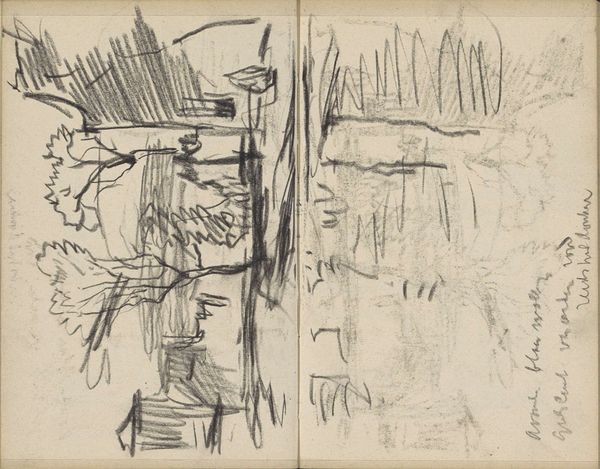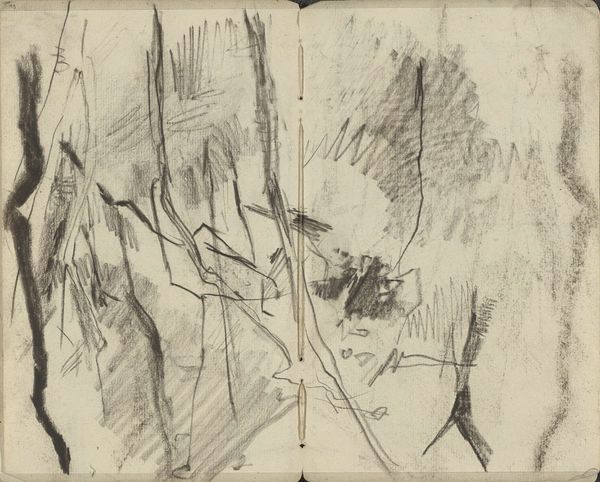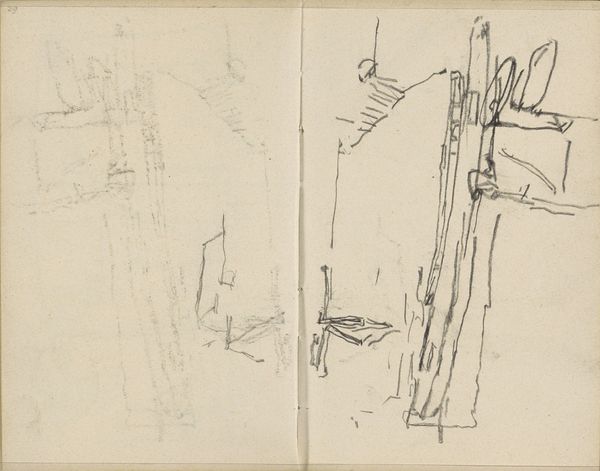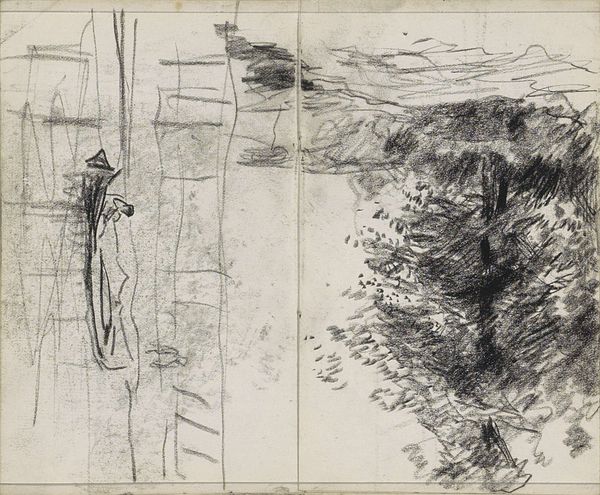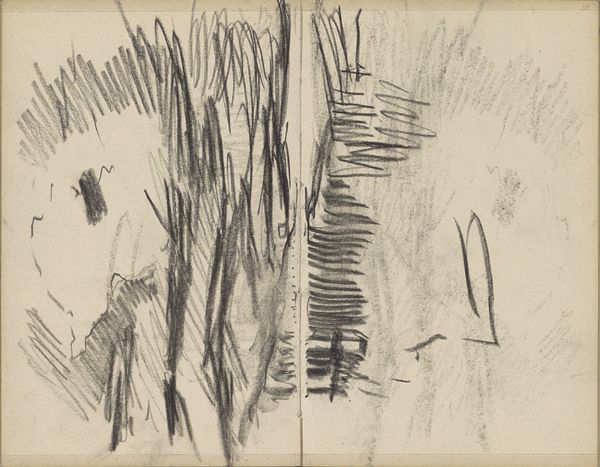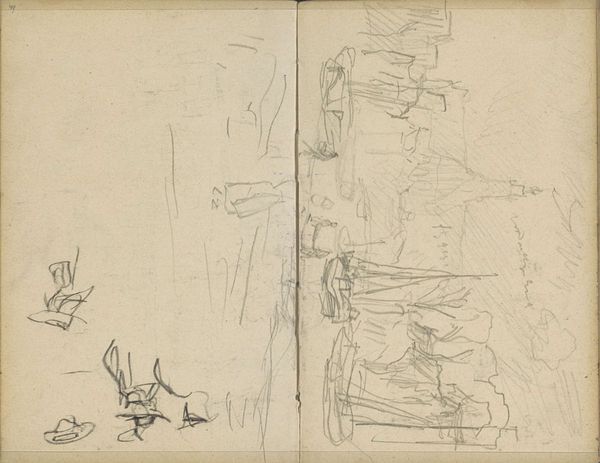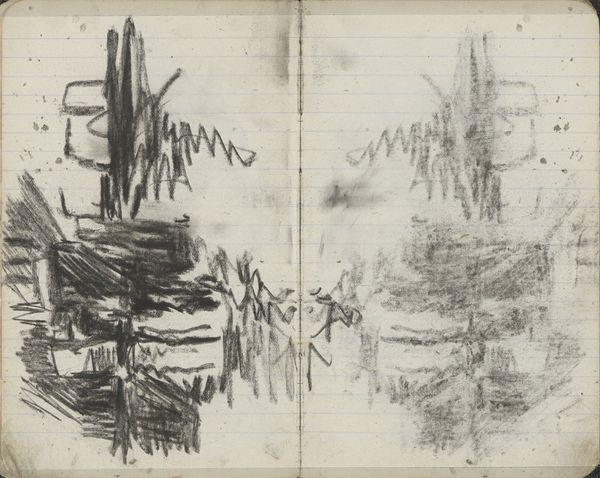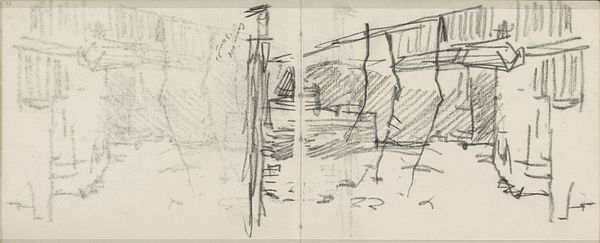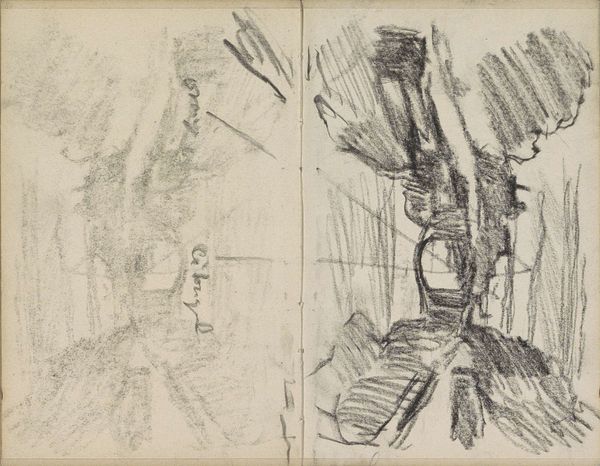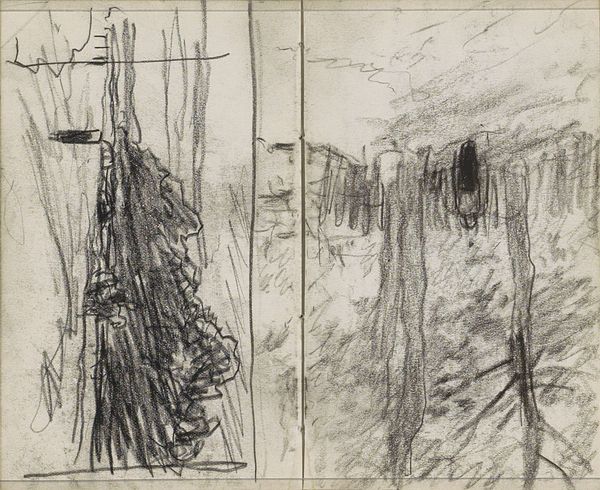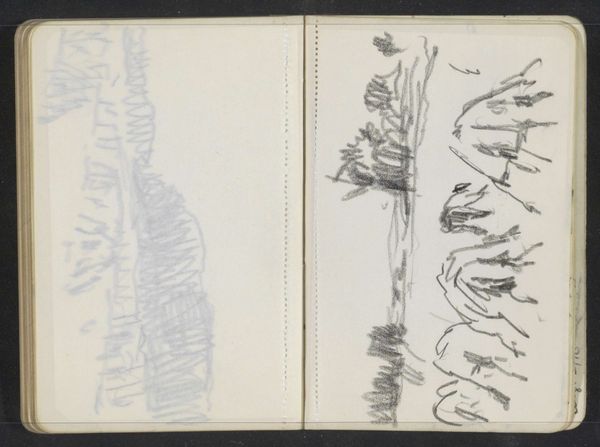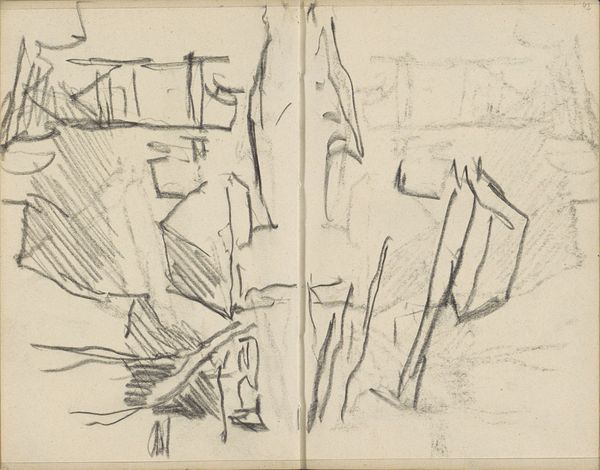
drawing, pencil
#
drawing
#
amateur sketch
#
toned paper
#
pen sketch
#
incomplete sketchy
#
landscape
#
personal sketchbook
#
ink drawing experimentation
#
pen-ink sketch
#
pencil
#
pen work
#
sketchbook drawing
#
sketchbook art
Copyright: Rijks Museum: Open Domain
Curator: This is a sketchbook drawing by George Hendrik Breitner titled "Winter Landscape with Buildings in Pittsburgh," likely created around 1909. It is currently held at the Rijksmuseum. What's your initial reaction? Editor: It feels raw, like a quickly captured moment. The skeletal trees against the barely-there buildings create this feeling of transience. I can almost feel the biting cold. Curator: It’s interesting you pick up on that rawness. Breitner was known for his direct, unvarnished portrayals of city life, and this sketch embodies that. He sought to capture the gritty realities of urban environments, particularly the industrial boom in cities like Pittsburgh. Editor: Exactly. This isn't some romanticized landscape. There’s an industrial bleakness to it. I think about labor, capital, and the environmental cost of progress when I look at this piece. Curator: Well, in that era, Pittsburgh was rapidly transforming. Steel mills and factories were redefining the landscape, bringing both prosperity and pollution. Breitner’s loose, sketchy lines capture the energy and also the disruption of this period. Editor: I'm drawn to how unfinished it is, we are allowed to imagine what could be, but we are given only bare necessities. Curator: This sketch challenges idealized notions of progress and instead presents a more ambivalent view of industrialization. He seems interested less in a polished rendering than in registering a feeling or an impression. The role of industrialisation in urban environments really challenged earlier conceptions of city spaces, didn't it? Editor: It certainly did! And I think this small drawing encapsulates a lot of that tension, especially during a time when the population was changing, society was changing, and new theories were coming out from the academy. Curator: Definitely. Breitner prompts us to consider the social and environmental impacts of urbanization and reminds us of art's role in documenting—and critiquing—those shifts. Editor: Yes. For me, it's a poignant reminder that "progress" often comes at a cost, a cost often disproportionately borne by marginalized communities. It encourages critical reflection on how we shape our environments and who benefits. Curator: So, looking at it now, knowing a little more, how does it strike you? Editor: With even more intensity. It goes beyond being a mere sketch; it’s a historical document that speaks to the complex intersection of industrialization, urbanization, and social justice.
Comments
No comments
Be the first to comment and join the conversation on the ultimate creative platform.
